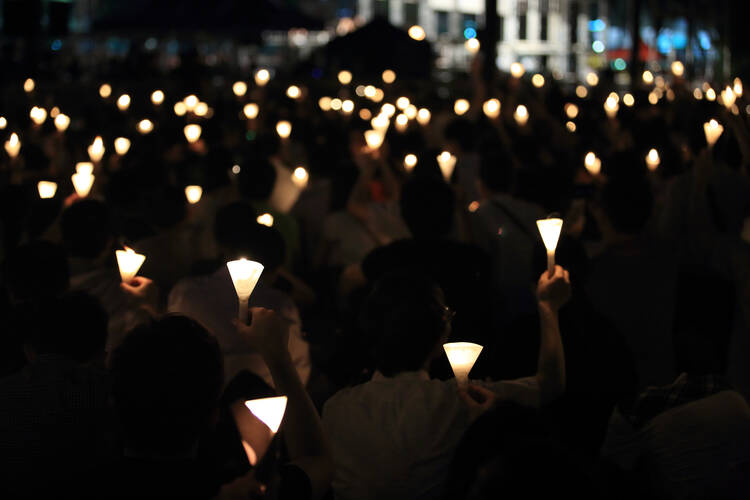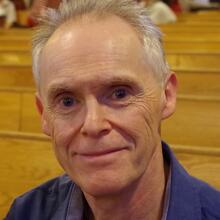Review: An inner-city Boston parish’s lessons for building a vibrant church community
It was a curious set of circumstances that led to People Get Ready, by Susan Bigelow Reynolds, a professor at the Candler School of Theology at Emory University. The book tells how an inner-city Boston parish managed to transform itself into a vibrant church community, an experience that Reynolds believes holds lessons for a new understanding of the role of the parish in Catholic ecclesiology.
St. Mary of the Angels, in Roxbury, was founded as a parish in 1908 to help accommodate the growing number of (primarily Irish) Catholics in the Archdiocese of Boston. With the exodus of parishioners to the suburbs, however, St. Mary’s lost prominence; by the 1960s, it was in danger of being closed down or merged with another inner-city parish.
The story of People Get Ready’s origins is almost as compelling as the book itself. In pursuit of low-cost accommodations during her graduate studies at Boston College, Reynolds leapt at the chance to reside in the rectory of St. Mary’s, where she combined her course work with 13 hours each week of parish administrative work. The parish had no pastor at the time, and this lack of direct hierarchical oversight enabled St. Mary’s parishioners to take matters directly into their collective hands.
Reynolds believes that a Vatican II vision of solidarity offered potential but unrealized groundwork for a transformation in the way Catholics interact at the local level.
“I wasn’t from Boston, and knew almost nothing about the city prior to moving there, so I didn’t have any preconceived ideas about Roxbury,” Reynolds said in a phone interview. “This was a gift, because it allowed me to learn through experience and relationship about a part of the city that had been maligned throughout most of the latter part of the 20th century as the consummate urban ghetto.”
Within weeks of taking up residence at the parish, Reynolds noticed something special at St. Mary’s. This was a community that was doing “lived theology” in relevant ways that she thought could be put to use in academic research on ecclesiology and culture. “Theirs was a story that deserved to be told and brought to bear on scholarly understandings of unity in diversity in the church in a serious way,” Reynolds said.
Reynolds argues that efforts to bring the church—and its local parishes—into the modern world that were inspired by the Second Vatican Council planted the seeds of St. Mary’s eventual transformation. Vatican II repositioned the parish, Reynolds writes: “No longer enclaves of spiritual refuge in a hostile world, parishes were now relativized within the fabric of their local civic, social and religious ecologies.”
Reynolds believes that a Vatican II vision of solidarity offered potential but unrealized groundwork for a transformation in the way Catholics interact at the local level. Post-Vatican II church leaders, however, opted to emphasize the concept of church as communion rather than solidarity as the most effective way to accommodate cultural diversity in the church. “Catholic ecclesiologies have largely neglected the concrete experiences of diverse communities on the ground,” Reynolds writes, “consigning the study of parish life to historians and sociologists on one hand or those concerned primarily with pastoral guidance on the other.”
Reynolds believes a misapplication of Vatican II’s emphasis on communion ecclesiology—a sense of oneness among all the baptized—led to confusion as to what exact role parishes were supposed to play in the life of the church. In Roxbury, Reynolds encountered a community that had stayed alive by prioritizing solidarity with its neighborhood and among parishioners as the key to its existence. Taking to heart the “theological agency” of the people of Roxbury meant treating parish practices, past and present, as “living ecclesiological sources.”
“Vatican II unwittingly made parish life into a project without a clear template for accomplishing it or even a sense of what, exactly, was to be accomplished,” Reynolds writes, adding that communion became an “agenda-setting paradigm” for theological and pastoral approaches to cultural diversity. Reynolds also suggests that the emphasis on communion ecclesiology inadvertently sustained a hierarchical, top-down approach to parish administration, leaving the laity in a state of “B-grade” holiness.
“When applied to the church in history, communion is often used to glorify a post-racial vision of Christian community in which difference itself is dissolved,” Reynolds writes. “It provides for the nominal celebration of diversity without calling into question the structures of sin and circuits of power that divide communities in history. The result is a pervasive naïveté regarding historical and structural dimensions of division in ecclesial communities.”
In addition, by emphasizing communion over solidarity, parishes were hamstrung in dealing with the problems associated with changing demographics and differences among parishioners of various ethnicities, socioeconomic statuses and even languages.
“By ignoring the power asymmetries that shape ecclesial practice, the communion paradigm continues to underwrite a color-blind approach that renders unclear the mission of the local church with respect to racial justice,” Reynolds writes. This was especially apparent in early- to mid-20th-century Catholic Boston. It was a time characterized by clear delimitations of power, circumscribed hierarchical relationships and well-defined parish boundaries. Despite these obstacles, however, it was in the battle-scarred neighborhood of Roxbury that the people of St. Mary’s parish later began to make their greatest mark.
For Reynolds, the St. Mary’s experience holds lessons for anyone interested in how the local parish can become a more meaningful element of “church.”
“Unable to appeal to formal ecclesial structures of lay authority or theologies of ministry that would have supported collaboration, parishioners had to be tactical in their resistance, creating space for dissent within fixed, pre-existing structures and with the resources and possibilities available to them,” Reynolds writes.
Reynolds cites the parish’s annual Way of the Cross celebrations as the key “ritual” manifesting St. Mary’s unique transformation. The processions were reimagined in early 1991 in response to gang wars, drug dealing, a controversial shooting by police and a general uptick in violence in the neighborhood surrounding St. Mary’s. Parish leaders seized on the Good Friday processions as a way to overcome local divisions and invite all community members to not only share in the re-enactment of Christ’s passion and death, but also to present a highly visible public symbol of suffering leading to redemption.
As Reynolds notes, “The Good Friday journey continues as a protest against violence and as an invocation of divine presence in the midst of everyday risings and dyings.... The Roxbury Way of the Cross can be understood as a form of practical action that affirms solidarity in difference.”
For Reynolds, the St. Mary’s experience holds lessons not only for other Catholic parishes in the United States, but also for anyone interested in how the local parish can become a more meaningful element of “church.”
“The dynamics that have shaped St. Mary’s for a century are today transforming the entire landscape of U.S. Catholicism,” Reynolds concludes. “Among these are new and expanded contexts of migration, sweeping regional shifts in parish growth and decline, an ever-increasing need for lay leadership, limited resources, deep institutional mistrust and betrayal propelled by the clergy sexual abuse crises, and mounting calls for racial and economic justice. In their own way, each of these forces raises complex questions for ecclesial practice, questions that can only be answered by coming to terms with the inevitability of instability and change in the first place.”
People Get Ready is aimed primarily at academic readers. Nonetheless, the book could well become a valuable resource for anyone concerned with the potential of the local parish to promote real solidarity in times of division and mistrust.
This article also appeared in print, under the headline “A Church of Solidarity,” in the July and August 2023, issue.











